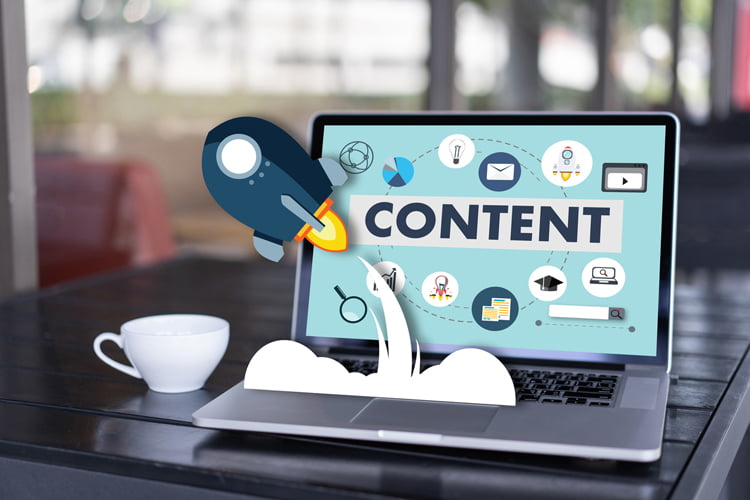The What and Why of Inbound Marketing
June 26th, 2018 by Heather MaloneyInbound marketing (aka ‘permission marketing’) refers to the strategy of attracting leads for your business via company-created digital content. That content addresses the needs which your products or services fulfil or problems which they solve, resulting in the right people (those trying to solve that problem or fulfil the identified desire) approaching your organization, and working their way through your material in order to self-select or qualify themselves as a potential customer.
So, inbound marketing is a strategy. You need to assess whether it is a strategy that is suitable for your particular business and marketplace.

Why Inbound Marketing?
Because everyone hates being sold to … it’s that simple!
When was the last time you were on the end of a cold call, and you thought “oh yes, why not spend the next 15 minutes listening to this offer about why I should switch electricity companies?” And even if you have engaged in such a phone call lately – perhaps to the person from a very worthy charity, rather than the electricity provider – did you end up buying / donating or just wishing them a nice day?
If you are in sales, and you only have to talk to people who are already in the market for your products / services, your job is so much easier.
Inbound marketing the focus is on providing help or value, rather than making a sale. The sale will come as a natural result of providing value and solutions.
Inbound marketing also addresses the new buyer behaviour that we have seen evolve over the last decade; customers carrying out personal research and practically making the decision with regard to what they want to buy, before they ever talk to a vendor. Also, with the proliferation of paid TV, many more free to air channels, internet radio, and free video content, ensuring that a more traditional advertisement is seen or heard is a lot more difficult. This article provides many statistics showing how effective inbound marketing can be compared to outbound marketing.
Please note, I am not saying that traditional marketing no longer works … I heard a presentation from a career telemarketer just last week, explaining the benefits of lead generation via cold sales calls. You need to ensure that your choice of marketing strategy is right for your market and your ideal customers.
Fleshing out your Inbound Marketing Strategy
If you decide that an inbound marketing strategy is right for your organisation, then you need to:
- Plan the content you are going to create in order to solve your prospects questions and engage them in their journey of discovery, building trust in your organisation, and desire for your products and services.
- Determine which tools or platforms you will use to make your content accessible to prospects.
- Create the content!
- Disseminate the content and make it easy for people to find, and/or pay for traffic.
- Measure and analyse the results, improving the content over time.
Clearly implementing an inbound marketing strategy requires effort and coordination of a variety of activities. Utilising a team of resources will help you implement more quickly. Tools such as a content calendar will help you to plan out the creation and distribution of your content in a logical manner.
Which Tools should I use?
Inbound marketing = making your marketing material extremely accessible so that your prospects can easily find the answers to their questions or solve their problems (i.e. find your products or services) when they are actively looking. Your content must add value, and guide prospects for whom your products and services are a good fit, towards the point of purchase. Some people will be in a hurry and will purchase immediately that they find a solution, so being able to buy from any piece of your digital content is important. Other prospects will take their time, evaluate multiple options, test you out, and then finally purchase days, weeks or months down the track. For such buyers, your content needs to educate and build trust.
The following tools are useful in implementing an inbound marketing strategy:
- Search engine optimisation (‘SEO’) – this activity is very important for ensuring that your digital content ranks above other organisations competing in the same space. Over time you want to “own the topic”, that is, be on the first page of results for every search on relevant words or phrases. SEO obviously needs content in order for search engines to point somewhere. The following types of content will deliver high ranks in the search engines the most quickly:
- Blogs – either a blog on your own website, or blogs published on other popular websites, pointing back to your website.
- Videos – most commonly distributed via YouTube, giving you access to people searching through this video search engine.
- Reviews – usually in 3rd party platforms such as Google Reviews. However, they can also take the form of testimonials in your own website, including video reviews.
- Website content – including online courses, guides, survey results, reports and research, white papers, diagnostic tools.
- Press releases – often distributed via dedicated PR sites.
- Pay-per-click advertisements (‘PPC’) – whilst this might sound like traditional outbound marketing, because you can configure your ads to only appear in response to searches for specific keywords or phrases by people located in a particular region, PPC ads can be very useful for bringing visitors to your website who are trying to solve a particular problem. PPC is very useful for bringing in immediate readers of your content while you are waiting for your organic ranks (SEO) to improve. Google Adwords and Bing are the main two platforms for PPC ads, because they are the most used tools for searching for answers to problems. PPC ads must be supported by dedicated content on your website, also called ‘landing pages’. People who click on your ad will arrive on your landing page. To get the best return on your investment in that click (you are paying per click), it is important that the content delivers on the ad, and then takes the visitor along their journey of [hopefully] deciding to buy from you.
- Social media – people talk about topics on social media, as well as talking about their lives. Find where topics related to your products and services are being discussed, and then get involved in the conversation. Posting your own content in your social media accounts will also help people to find your content when they search for it in the social media platforms ? most social media platforms use hashtags (#) for helping people find content on a particular topic.
- Social media advertisements – this is PPC within social media platforms. The difference is that for some of the social media platforms, you can configure your ads to only show for people who match very specific demographics.
- Email and SMS marketing – once people have identified themselves as actively seeking to solve a problem or fulfil a desire, hopefully for your product, they may subscribe to receive future email and SMS messages from you. To inspire the visitor to opt-in for email / SMS there must be compelling value contained in your digital content. Often your blog content and other website content will be pushed to subscribers in a logical manner.
- Marketing automation – tools that automatically send a choreographed series of content to subscribe to learn more about your products and services. The more sophisticated of these automation tools will start and stop the delivery of your content, based on the manner in which your prospect is interacting with your content.
One of the great advantages of digital marketing tools is that they enable you to measure the interactions of people with your content and identify where visitors are dropping off. This can help you to improve your content and marketing process over time, and therefore increase the rate of conversion of visitors to paying customers.
As part of our digital marketing services we would be delighted to help you determine whether an inbound marketing strategy is right for your organization, define and plan your strategy, create the required content, implement, and analyse the results.








August 7th, 2018 at 4:12 am
That’s some great information.
August 24th, 2018 at 5:22 am
Great article!